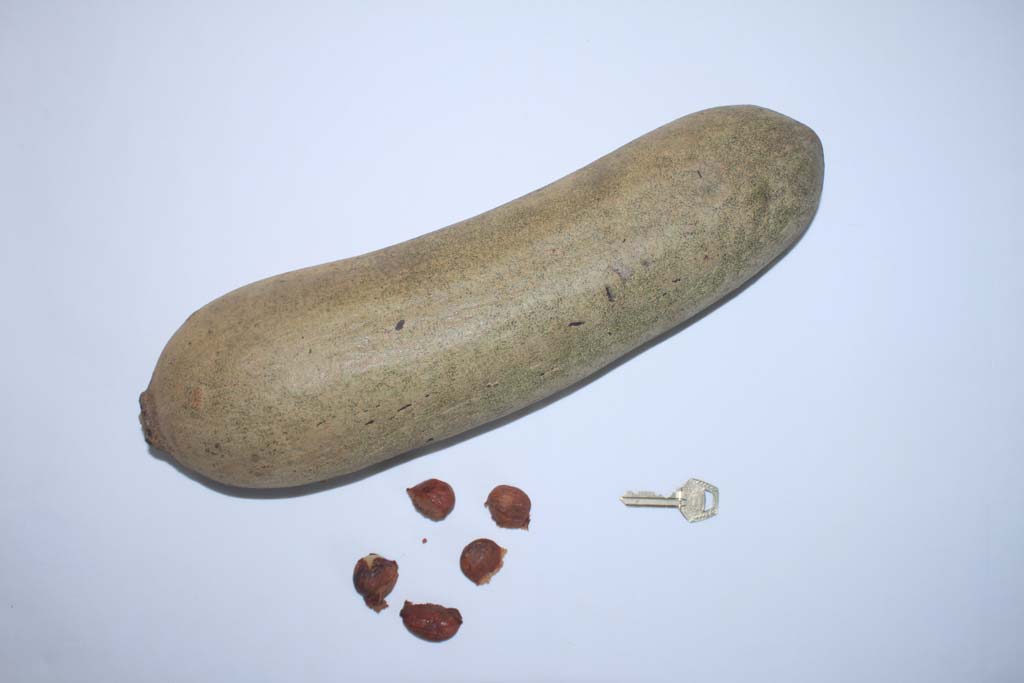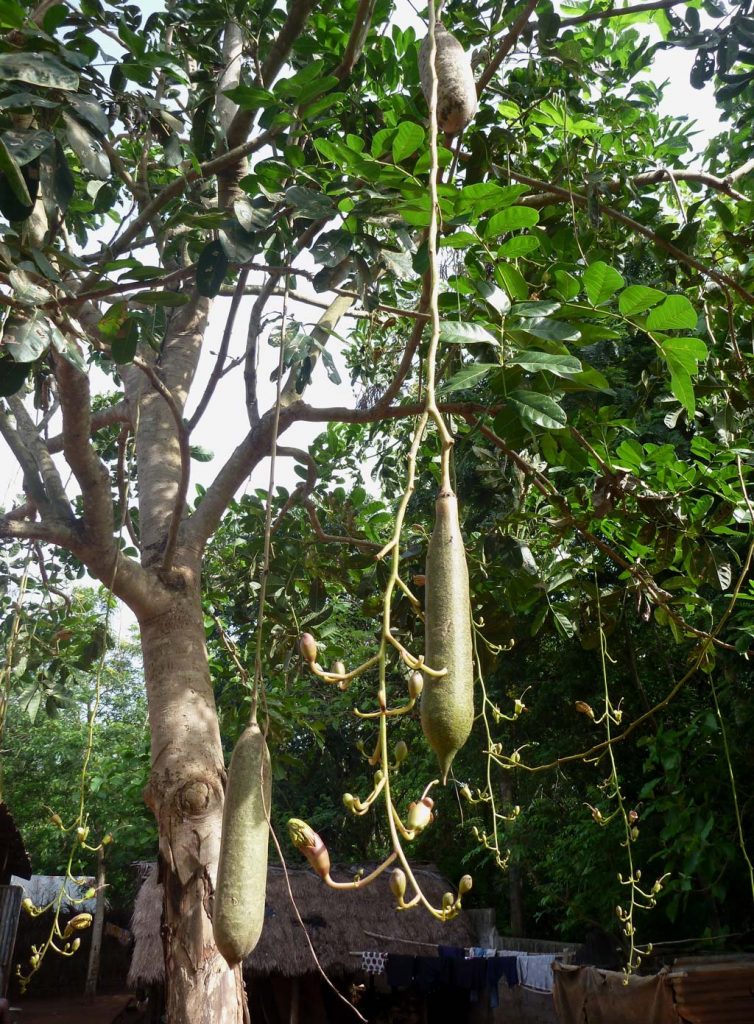
23 Jul Kigelia africana
Scientific name: Kigelia africana Lam. Benth.
Family: Bignoniaceae.
Distribution/conservation status: occurs mainly in drier regions, such as high rainfall savanna, along watercourses, and in open woodland. It is quite common, though scattered in distribution. Not assessed by the IUCN Red List.
Common names: sausage tree (English), Iyan, Pandoro (Yoruba), Alamborogoda, Amo-ibi (Igbo), Rahainaa (Hausa), Osuobon (Edo).
Fruits/Seeds: massive hard, grey-brown, sausage-shaped fruits, hanging on very long stalks and containing many small ovoid seeds embedded in fibrous flesh.
Fruiting time: January – March.
Seed collection: fruits take a very long time to ripen; when ripe they fall from parent tree and are easily collected. Split the fruit lengthways using a strong knife or saw and dig the seeds out carefully with a blunt tool such as a spoon or potato peeler. Leaving fruit to partially decay makes seed removal easier.
Type of seed: orthodox.
Sowing method: soak and stir seeds in sulphuric acid for 5 minutes, taking safety precautions to protect face and hands, then sow at a depth of 2cm.
Sowing medium: equal parts top soil and cured sawdust.
Germination period: 6 days.
Germination percentage: 80%.
Growth/development: seedlings require full sunlight as shade reduces growth rate; they can be planted out 4 months after germination.
Note: the fungus Newinia kigeliae causes rust disease. Fruits are eaten by livestock and elephants which are important seed dispersal agents.

Kigelia africana flowering and fruiting. credits: D.Bown

